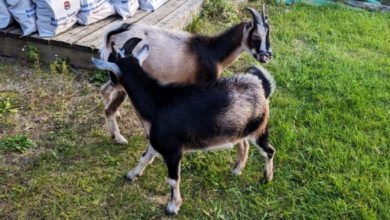Plantation To Plastics: How Are Some Of The Fabrics We Use Everyday Made?

While most people know that plastics come from petroleum, few realize that many everyday fabrics also come from plants. Cotton, for example, is derived from the cotton plant, while linen comes from the flax plant. Even rayon, one of the most popular synthetic fabrics, is made from cellulose, a plant-based material.
This article will look closely at how some of the most popular fabrics are made from plant materials. We’ll learn about the history of these materials and how they’re used today. We’ll also explore the environmental impact of fabric production and how it affects the world around us.
Latex
A lot of what we use in our daily lives contains latex. This versatile fabric is everywhere, from the clothes we wear to the gloves we use when cooking. But how is latex made?
Latex is a natural material that comes from rubber. And did you know that natural rubber is derived from a tree? The Hevea brasiliensis tree, which is native to South America, is the primary source of natural rubber. To tap this tree, a V-shaped cut is made in the bark, and a cup is placed underneath to collect the latex sap that flows out. The sap of the tree is collected and then processed to create latex. This process includes adding chemicals and vulcanizing, which is a process of heating and cooling the latex to make it stronger.
The end result is a strong, durable fabric that can be used for a variety of purposes. Latex is often used to make gloves, tires, and even condoms! It’s also hypoallergenic, so it’s a great choice for those with sensitive skin.
Latex is a great option if you’re looking for a versatile, strong fabric for your next project. Thanks to its natural origins, it’s also eco-friendly. So you can feel good about using it, knowing that you’re not harming the environment.
Cotton
Cotton is a natural fiber derived from the cotton plant’s seeds. The plant grows in warm climates and produces fluffy white fibers, then spun into thread. This thread can be used to make several different fabrics.
Cotton is a popular fabric because it is soft, durable, and absorbent. It is often used to make clothing, towels, sheets, and other household items. Cotton can also be mixed with other fabrics to create blends that have different properties. For example, cotton can be blended with polyester to create a wrinkle-resistant fabric.
The process of growing and harvesting cotton is labor intensive. Cotton plants must be hand-picked to avoid damaging the fibers. Once the cotton is harvested, it must be cleaned and processed before it can be spun into thread.
The United States is one of the world’s leading cotton producers. Other major producing countries include India, China, Pakistan, and Brazil.
While cotton is a natural fiber, it does require the use of chemicals during its cultivation and processing. Pesticides are used to protect plants from insects, and herbicides are used to control weeds. These chemicals can end up in the environment and have been linked to health problems in people and animals.
Organic cotton is grown using methods that avoid the use of harmful chemicals. This type of cotton is more expensive than conventional cotton but is better for the environment and the people who wear the fabrics made from it.
Cotton is a versatile fabric that has a long history of use. It is comfortable to wear, easy to care for, and inexpensive. However, cotton production has some negative environmental impacts that should be considered before purchasing products made from this fabric.
Linen
Linen fabric is made from both the long and short fibers that are found in the flax plant. The long fibers are spun into a yarn and then woven into a fabric. The short fibers are used to make a coarser type of linen fabric.
Linen fabric is very strong and durable. It is also absorbent and dries quickly. Linen fabrics can be used for various applications such as clothing, home furnishings, and industrial uses.
The flax plant is native to the Mediterranean region and has been cultivated since ancient times. Flax was used to make linen fabrics in ancient Egypt. “Linen” comes from the Latin word for flax, which is Linum.
Flax plants are grown in warm climates all over the world. Most of the flax used to make linen fabric is grown in Western Europe, Canada, and the United States.
The process of making linen fabric begins with harvesting the flax plant. The plant is harvested when the seeds are ripe, and the stalks are dry. After harvest, the flax plants are retted, leaving them in the field to rot. This process loosens the fibers from the plant’s stem.
The next step in making linen fabric is to separate the fibers from the plant’s stem. This is done by a process called scutching. In scutching, the stalks are crushed and then beaten to loosen the fibers.
After scutching, the flax fibers are combed to remove any impurities. The fibers are then spun into yarn and woven into fabric. Linen fabric can be made from both long and short flax fibers.
Linen fabric is used in various applications such as clothing, home furnishings, and industrial uses. If you are looking for a strong and absorbent fabric, linen is a good choice. Linen is a natural fiber that is biodegradable and recyclable.
Rayon
Rayon is a regenerated cellulose fiber and it is made from wood pulp. It was first created in 1884, but it wasn’t until the early 1900s that it became widely used in textile manufacturing.
The wood pulp is dissolved in chemicals to create a viscous solution. This solution is then forced through tiny holes, called spinnerets, to create long filaments of fiber. The filaments are then cooled and solidified before being wound onto spools.
The fibers are often spun into yarn or thread for various textile applications such as clothing, upholstery, and linens. Rayon is known for its absorbency, breathability, and softness, making it a popular choice for summer clothing. It is also relatively inexpensive to produce, contributing to its widespread use.
Despite its many beneficial properties, rayon does have some drawbacks. It is not as durable as other fabrics, such as cotton or linen, and it is prone to shrinkage and wrinkling. Additionally, rayon fibers can break down quickly when exposed to strong chemicals or sunlight, so care must be taken when laundering and storing items made from this fabric.
Overall, rayon is a versatile and widely-used fabric that offers several benefits for both manufacturers and consumers. Its low cost and easy care make it a popular choice for many applications, but its lack of durability should be kept in mind when selecting this fabric for certain items.
As the world population continues to grow, the demand for fabric will likely increase. This could positively or negatively impact the environment, depending on how the fabric is produced. The impact could be positive if more environmentally-friendly methods are used, such as organic farming or recycled materials.




